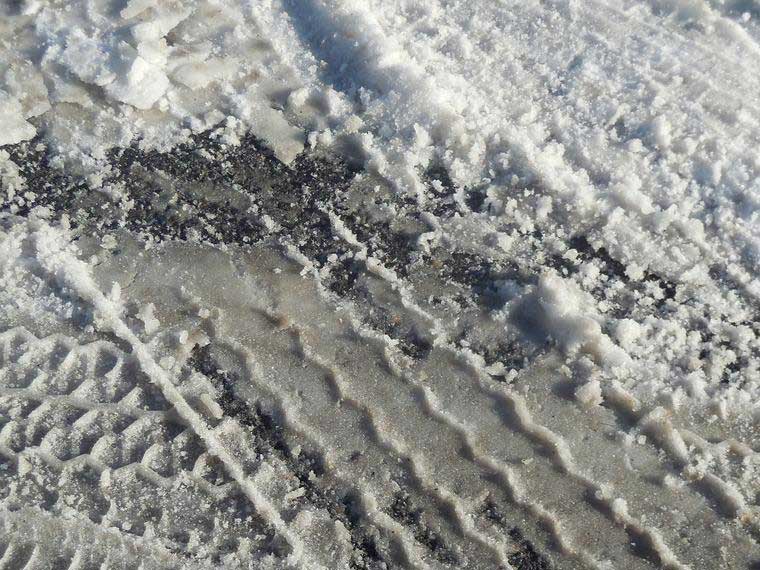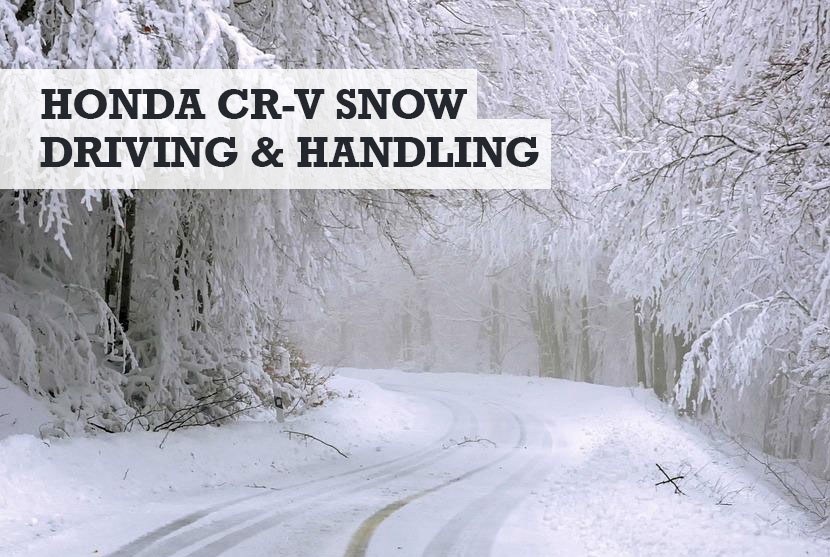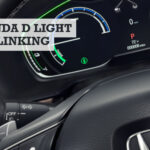The Honda CR-V has a reputation for being a practical and fuel-efficient car. You might be wondering how well it can handle harsh winter conditions or snowy roads. We’re going to dive into the details and explain how well this compact SUV handles the snow.
Can a Honda CR-V drive in snow? Yes, a Honda CR-V can drive in snow. It’s comparatively good driving in snow and will handle reasonably well due to the all-wheel drive (AWD) system that comes as standard. But, for better CR-V handling in snow, snow tires will further help.
The reason a Honda CR-V is good in snow and handles well is due to most of the horsepower and torque going to the front wheels. This gives you most power beneath the heaviest part of the SUV, improving handling and traction on snow and ice.
If the CR-V does start to slide about in the ice, you can activate AWD to reduce the risk of slipping in the snow, with better handling.
That’s the short answer, but if you are going to be driving your Honda CR-V in snow, make sure you read the following tips.
How a Honda CR-V handles in the snow
The Honda CR-V can handle well in snow. It comes standard with Honda’s all-wheel drive system, which helps the car adapt to slippery ice and frozen roads. Combine this with heated seats and a host of features like traction control and antilocking breaks, and you’ve got an SUV that can handle winter conditions like a champ.
Understanding what makes the Honda CR-V good at driving in snow and how you can improve handling even further is essential for the winter. If you’re looking to know what makes this Honda suitable for tough inclement weather conditions, then let me explain the reasons in detail.
Honda CR-V snow driving features
The Honda CR-V comes with a suite of features to aid it in snowy conditions. These are as follows:
- All-wheel drive system (AWD).
- Traction control.
- Vehicle stability assist.
- Anti-lock brake system.
- CR-V models have good ground clearance.
Honda CR-V all-wheel drive system
The all-wheel drive system on a CRV is fantastic for snowy conditions, pre 2013 Honda CR-V’s come with a hydraulic pump-based system, one pump for the front wheels and one for the back. Losing traction on the front wheels makes the rear hydraulics engage.
For models built after 2012, an onboard computer monitors the traction in the wheels and engages when it senses a discrepancy between the traction at the front and back wheels. It disengages when the traction is equal.
Both the computer and hydraulic system are automatic, you don’t need to switch them on or off, they activate as needed.

Honda CR-V traction control
Honda CR-V also comes with traction control, this is normally always on by default and is monitoring excessive wheelspin. You do have the option to switch it off, but it will always switch back on when you start your car up the next time.
Traction control is compulsory for all cars built in 2011 and onwards, its main function is to ensure tires are gripping the road properly. Excessive wheelspin is usually a sign a tire doesn’t have adequate traction. Once this wheelspin is detected it tries to stop or slow it down.
Honda CR-V vehicle stability assist
The vehicle stability assist system helps your car remain stable while cornering. When you’re driving on snowy or slippery roads losing control of your vehicle when cornering is a serious potential problem, especially on unfamiliar roads.
The vehicle stability assist system works by reducing the engine output and selectively activating the brakes, ensuring that the vehicle doesn’t slide completely out of control. It’s easy to see why this system is invaluable in snowy conditions.
Honda CR-V anti-lock brake system
The CR-V antilock system activates by pulsing the brakes in rapid succession, this prevents the tires from locking up. The electronic brake distribution system also helps balance the front to rear brakes, depending upon how the vehicle is loaded.
The ABS (not to be confused with “brake hold”) is there to help you stop safely on snowy roads – it activates occasionally in normal conditions, and it feels like the brake pedal is pulsating slightly. You might notice it activates much more frequently on icier roads, Honda’s advice to the driver is to maintain steady pressure on the brake pedal while it’s pulsating.
Honda CR-V ground clearance
The standard CR-V gets a ground clearance of 7.2 inches, which is very good for most situations. This is plenty of ground clearance for most roads that have some snow on them.
The AWD model gets 8.2 inches of ground clearance. This is one of the reasons why the CR-V is rated so highly for driving in snowier climates, as the ground clearance is hugely important there.
Snow over seven inches will cause the Honda CR-V to start struggling, but most SUVs will struggle to handle that kind of snow.
Tips for driving a Honda CR-V in the snow
The CR-V is well equipped to handle snowier conditions, but there are extras you can add that will greatly aid your driving experience. These include:
- Ice studs.
- Snow tires.
- Snow chains.
- Snow socks.
One option I don’t recommend you use is “brake hold” or ECON mode. You want as much control over your SUV as possible, and those two options take elements of that away from you.
Ice studs
If you frequently drive on ice roads then there is no substitute for studs, they give a lot more grip potential to the tire and all but guarantee you’ll stay glued to the road.
Snow tires
Investing in good snow tires can be an excellent idea if you live in a climate with long or very cold winters. While AWD vehicles are very reliable in snowy conditions, road conditions are never always the same, snow tires act as insurance against any unforeseen issues.
Snow chains
By using snow chains (view on Amazon), you can add extra traction or grip to tires when traversing icy roads. They’ll completely minimize skidding and are good if you’re not used to driving in snowy conditions.
Snow socks
Snow socks are like snow chains, they allow for better steering and increase the friction of the tires on the road. They’re another fantastic option if you plan to do some driving on snowy or icy roads. However, they are not a replacement for good snow tires.
With all these options, it’s important to know what your tire dimensions are, to get the right fit and avoid damaging your tires in any way.
Driving a Honda CR-V in snow uphill
Honda CR-V is capable of traversing hills in snowy/very cold conditions. The most important thing is that you maintain a sensible speed, as crawling up a hill when the roads are frozen is only going to kill your momentum and cause you to get stuck.
The video below shows a typical example of how a Honda CR-V can drive in snow uphill using the tips outlined in this guide.
A top-ranking SUV for snow
The CR-V was voted in the top 10 SUVs for snow by US News in 2022.
“All-wheel drive is optional on all trims, though the range-topping Touring model fits it as standard. Snow Belt dwellers might want to pony up for the Special Edition trim, since it comes with heated front seats and remote start. It also comes with dual-zone automatic climate control, which should help settle differences over who is too cold and who’s too warm.”
Related questions on CR-V snow handling
Honda CR-V 2-wheel drive in the snow?
You can use a 2-wheel drive Honda CR-V in the snow – but you’ll probably find that you need to get a good set of snow tires. A 2-wheel drive without decent snow tires is going to struggle a lot, whereas an AWD with general all-season tires is most likely going to be ok on snowier or icy surfaces.
That said, this report using consumer test data showed that snow tires outperform all-season tires.
What gear to drive in the snow Honda CR-V?
Honda has a webpage here with some tips for driving in cold conditions. They boil down to the following:
- You must be able to see through every window in your vehicle (this is part of the highway code).
- Drive carefully, pull away in second gear, when in motion keep the gear high but the engine revs low – as this prevents tires from spinning.
- Match your speed with your vision – or match stopping with what you can see and maintain distance behind other vehicles.
- Slow down and brake in a straight line to avoid sliding on icy roads
- Maintain a sensible speed when going up hills – drivers get stuck on hills because they’re going too slowly.
Does the Honda CR-V need snow tires?
A Honda CR-V with an AWD won’t need snow tires, but it may help you. Whether you want to get snow tires or not depends on where you’re located.
If you’re only driving occasionally in the snow then they’re most likely not necessary. If you’re going to be doing a lot of driving in the snow, then it might be a good idea to get some dedicated snow tires.
How to turn on AWD in the Honda CR-V?
You don’t turn it on or off. The AWD system engages automatically – there’s an onboard computer system that analyses the level of traction on your wheels.
If it sees any lop-sided irregularities, it automatically activates to correct any imbalance. No manual input is needed from the driver.
Honda CR-V traction control button
This video by DIY Pinto explains how to toggle the traction control on a CR-V. In summary, though you do this the following way:
- Check to the left of your steering wheel and look down there should be a row of 3 buttons.
- There should be a button that looks like a car with skidding wheels and the word “off” just below it.
- Press this button – there should be a beeping sound.
- The instrument dashboard just above the steering wheel should have the same icon as the button lit up – this signifies that traction control is now off.
- Pressing the button again will turn the traction control back on.
Note that the video above is for US cars, but the button should be the same for UK/European cars.
Conclusion
If you want a comfortable and luxury SUV that handles well in the snow, you need not look further than the Honda CR-V. With AWD and features for the coldest of weather conditions, it’s an exceptional choice.
More simple car guides…
- Choosing the best engine oil for your ride
- What do when your key fob battery dies on you
- What that rattling and clicking noise means
Image of snow driving in the header from https://pixabay.com/photos/road-trees-snow-cold-ice-frost-4730553/







